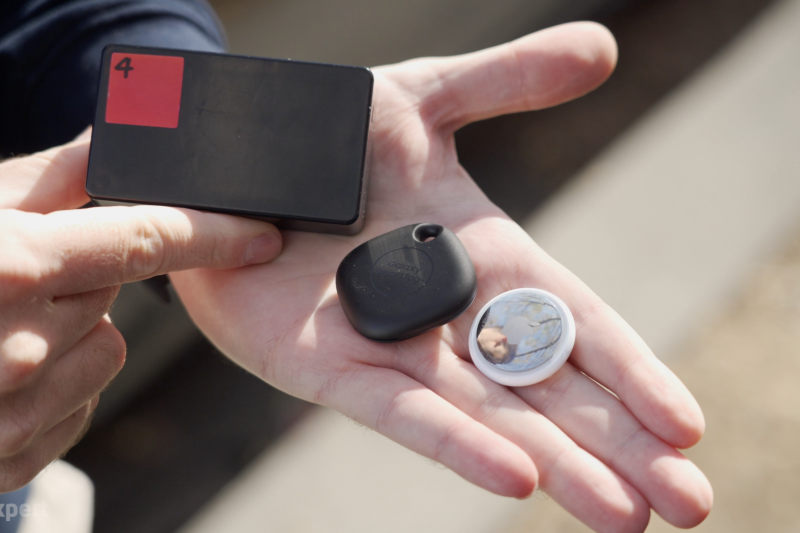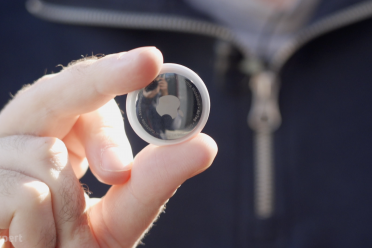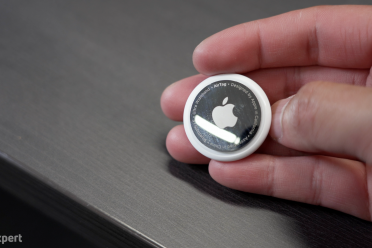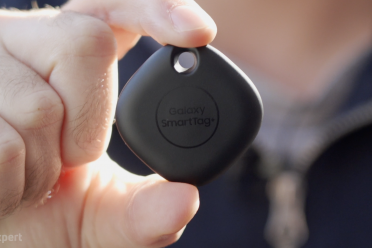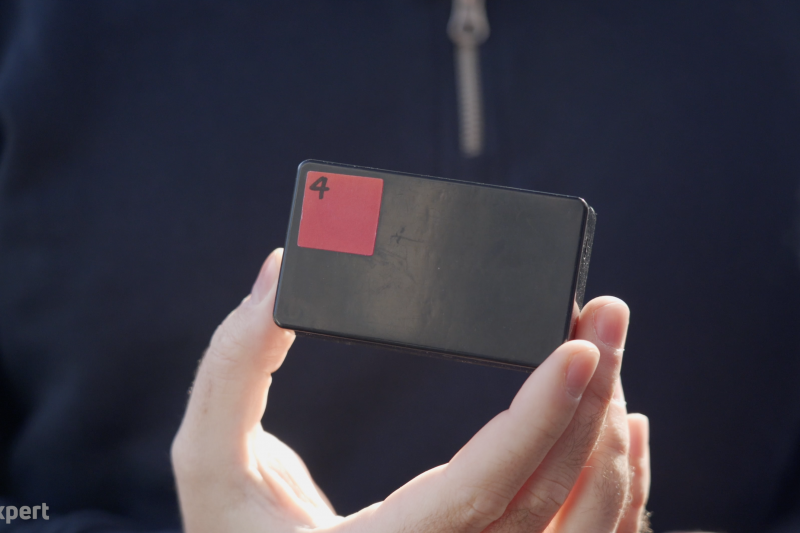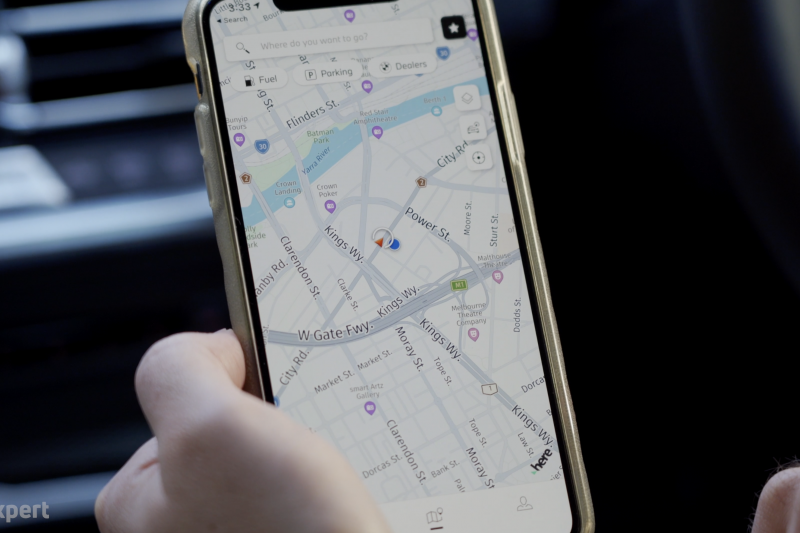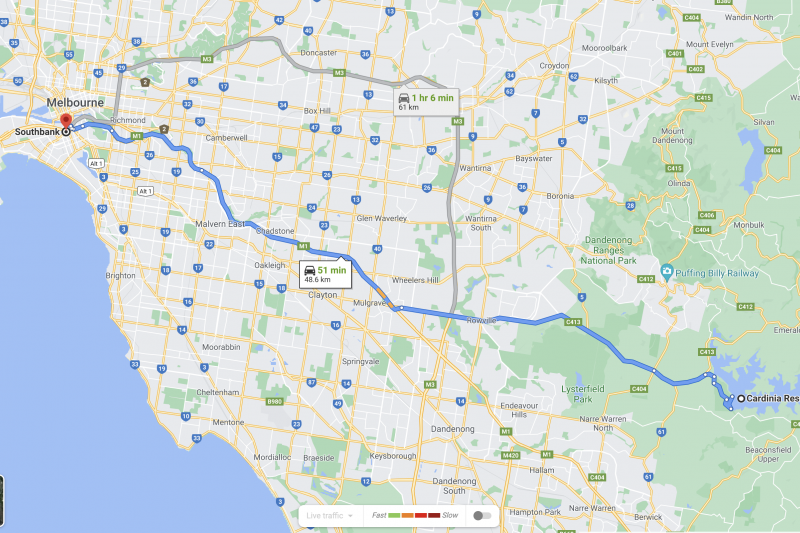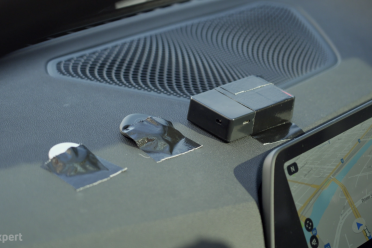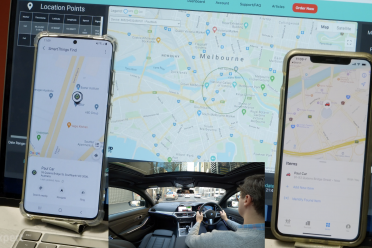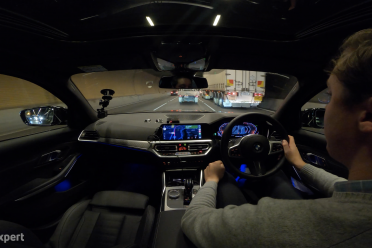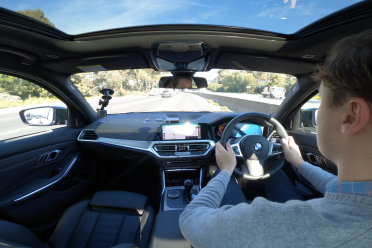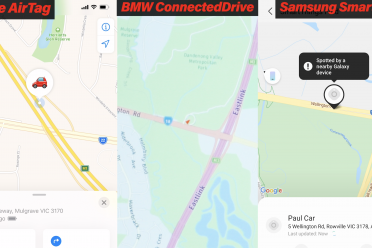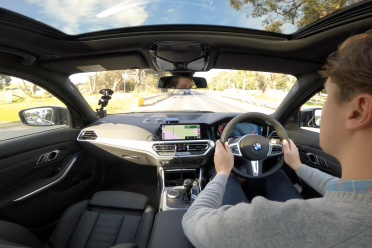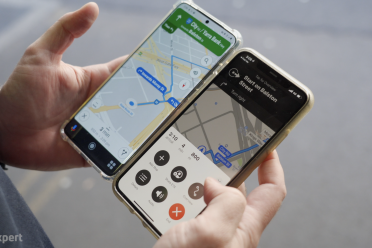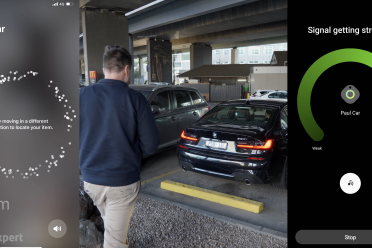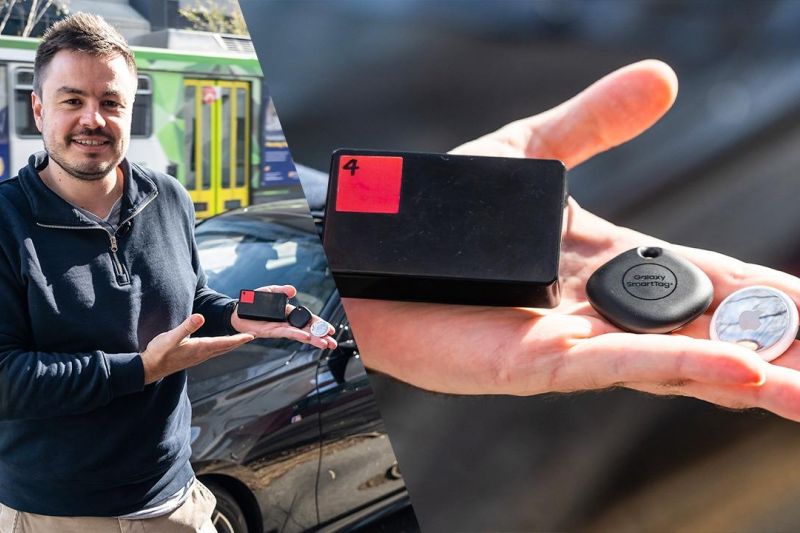If you have old cars like I do, or a new car without inbuilt GPS tracking, you may have considered using the latest raft of tracking tags to keep track of your car if it ever gets stolen.
So we bought an Apple AirTag, a Samsung SmartTag+ and a GPS unit with 3G and 4G built in to test how well they work and which is best value for money.
As a redundancy to the external devices, we also used the ConnectedDrive feature on the BMW 3 Series we recently tested to see how well that worked in comparison.
How much do they cost?
Both Apple and Samsung recently launched their UWB-enabled tracking tags.
There are other tracking tag brands on the market (such as Tile), but both Apple and Samsung have greater global market reach in comparison to other established brands (I’ll explain why shortly).
| Device | Cost (AUD) |
|---|---|
| Apple AirTag | $45 |
| Samsung Galaxy SmartTag+ | $60 |
| GPS tracker with LTE | $147 + $7/month |
| BMW ConnectedDrive | From $119/year |
How do they work?
Apple AirTag and Samsung Galaxy SmartTag+:
Both the Apple AirTag and the Samsung Galaxy SmartTag+ use ultra wide band (UWB) technology to help locate the device securely and precisely.
UWB isn’t new – the technology has been around since the early 2000s and is designed to transmit data across a wide radio bandwidth. It’s able to transmit at between 500Hz to several Gigahertz in a bid to avoid interference from other signals.
It sends pulses every other nanosecond and data is sent encrypted with the protocol capable of random number generation and cryptography. Both devices use a small CR2032 battery and claim an operating life before battery change of around one year.
These devices aren’t like a phone or the GPS unit we are testing which allow transmission of data via a cellular network. They are ‘dumb’ devices in essence – they only communicate with a nearby phone (a compatible Apple phone in the AirTag’s case and a compatible Samsung phone in the SmartTag+’s case), which then relay’s the device’s GPS location on its behalf.
So every other nanosecond, a pulse is made in the hope a nearby compatible phone sees it. If it does, the device’s precise GPS location is relayed to Apple or Samsung’s servers and then is made visible to the owner (and only the owner) of the device to help track its location.
If an AirTag is put into ‘Lost Mode’, it’s able to display a message via NFT (on any device that supports NFT). This message could be the owner’s phone number or some other variable information to help identify the owner.
The SmartTag+ can go one step further and locate the owner’s phone by double tapping a button on the device itself.
GPS tracker:
Unlike the Apple AirTag and the Samsung SmartTag+, the GPS tracker we bought (from Australian company SolidGPS) uses an internal GPS receiver, along with an internal SIM card.
The SIM card is able to transmit the GPS device’s precise location over LTE to a database that is accessed via a dashboard. In addition to tracking the device’s location, it can also be used to monitor speed and notify the owner when a vehicle leaves a boundary preset by the user.
In theory this should be the most accurate way to keep tabs on your car because it doesn’t need to rely on nearby devices for connectivity.
Unlike the Apple AirTag or the Samsung SmartTag+, the internal battery on this device lasts for around 3-6 months and requires around six hours of charging at each interval. A larger battery can be optioned, which extends battery life to around 12 months.
In the event the device can’t get a GPS signal (such as a tunnel or underground car park) it’s able to use cell triangulation, which provides a more approximate device location.
BMW ConnectedDrive:
We happened to have a BMW 3 Series in the garage at the time of this test with ConnectedDrive enabled, so we wanted to use that tech as a backup to the GPS tracker to see how well inbuilt systems work.
It basically packs one of these GPS trackers within the vehicle. It too is powered by a data SIM card that transmits the car’s location. It offers additional functions such as remote starting and remote diagnostics, but for the purpose of this test we were just using the GPS locating function.
Many other brands, including Ford with FordPass Connect, offer similar functionality.
AirTag v SmartTag+ v GPS tests
We came up with a test methodology that we think covers all bases to figure out which device is best at keeping tabs of your car while it’s on the move.
Our test loop is a 45km drive from Melbourne’s CBD (where the CarExpert office is located) with four checkpoints along the way. The final checkpoint is in a location with no LTE or phone reception.
The test concludes when we drive back to the CBD and park the car at a location near the office to determine how well each device can find the car once it has range and is stopped.
At each checkpoint we polled each device using to see how close each of the devices were to the vehicle’s actual location. The checkpoints were pre-entered into the vehicle’s navigation and we used the driver and synced footage to determine when the vehicle actually crossed each checkpoint.
To avoid an unfair advantage for the Apple device, the driver’s Apple iPhone had its Find My network disabled so it wouldn’t relay the location of the Apple AirTag while the driver was in the vehicle.
Each device was taped to the dashboard of our test vehicle.
So, how did they perform?
Checkpoint 1:
Our first checkpoint was near the exit of the Burnley Tunnel in Melbourne. We picked this point because it would be out of GPS range and, in theory, it would make it hard for the Apple and Samsung devices to relay their location because the host phone would also need an accurate GPS location.
As expected, we didn’t get any response from the GPS tracker, the SmartTag+ or the vehicle’s inbuilt tracking system until just after the vehicle exited the tunnel. Surprisingly, the AirTag didn’t actually update its location for another two kilometres and was showing its location at the entrance of the tunnel.
Checkpoint 2:
Checkpoint two was at the exit of the freeway. For those familiar, the Wellington Road offramp leaves a major arterial and enters a major suburban road. Not far from the offramp is an intersection with a major tollroad, which is where we next checked in.
At this location each of the devices accurately located the vehicle. It was at this point we discovered that the GPS tracker we bought only updates its location every 10 minutes or so. But when it did update, it was as accurate as the vehicle’s inbuilt on-demand GPS tracker.
Again, the AirTag was out of date and showed the car still on the previous freeway several kilometres back, whereas the rest of the devices accurately relayed the vehicle’s location.
Checkpoint 3:
As we head more remote through a more isolated area served by a two lane road, we wanted to see how well our devices would relay their locations when less phones were about.
Unsurprisingly, the GPS tracker and the vehicle’s inbuilt GPS relayed exact locations with ease (phone reception was still fine in this location).
Both the AirTag and the SmartTag+ reduced their update intervals due to less relay phones being around. But again, the SmartTag+ eventually showed the correct location when the device passed another Samsung phone. The AirTag remained out of date by around seven minutes.
Checkpoint 4:
Our final checkpoint was a location with no phone or LTE reception. The goal of this location was to see which device would relay the closest location near the final stopping spot of the vehicle.
The inbuilt GPS and aftermarket GPS module both relayed the last known location to within 200m. This meant that if the car was stolen, you’d still need to do some hunting to track it down after its final known location if cell coverage was to end.
Continuing the trend, the SmartTag+ landed the closest location to the car’s resting place. It was around 500m away – it last received a relay phone just near the last intersection the vehicle passed.
The AirTag last received an update some nine minutes before that.
The city hunt:
Finally, the 3 Series drove back to the city parking just near the office. Once it was there we went on the hunt for the car using just an Apple and Samsung phone.
Both phones successfully located the car a couple of kilometres from our office. It was located in a built-up car park near a McDonalds, so it presumably had access to a number of relay devices.
Verdict
Well, we were pretty surprised the results of the test.
We expected both the aftermarket and inbuilt GPS units to work as advertised. They relay precise locations via a cell network and your vehicle can almost always be found with ease.
The only downside to both of these is they are (relatively) expensive and require a battery that constantly needs monitoring or charging to remain active.
Our aftermarket unit needs to be charged up to four times a year and needs a decent GPS signal to relay a precise location. It also requires a monthly subscription for the SIM to remain active.
It’s the same story with the car’s internal GPS tracker. Very convenient, but it also requires a yearly subscription and relies on the car’s battery being charged and active.
We didn’t think the AirTag and the SmartTag+ would work well at all given how close you would need to be with a relay device to send precise location updates.
And while the AirTag didn’t offer the frequency of updates as the SmartTag+ it was still a reliable way to cheaply locate the vehicle if it were to be stolen.
Apple also only enabled support for relaying the location of the device in an update as part of iOS 14.5. So while there are over a billion Apple devices globally, only devices with the latest Apple firmware will relay an AirTag’s location.
Comparatively, there are far fewer Samsung devices in Australia compared to Apple devices, yet they managed to relay the location of the SmartTag+ more accurately than the AirTag. That indicates to us that as more users migrate to iOS 14.5, the frequency and accuracy of updates from AirTags will only get better.
The verdict here is that for the cost of one AirTag and one SmartTag+ hidden inside your treasured car, you can have fairly accurate car tracking if your vehicle was ever to be stolen.
It’s worth noting that if a thief is with your car for a set period and an AirTag or SmartTag+ is near them, their compatible phone will be notified. That would prompt a thief to search the car for the device.
But, hopefully by that point you will have already found your device.
Did we miss anything here? Is there anything you would have done differently as part of the test?





